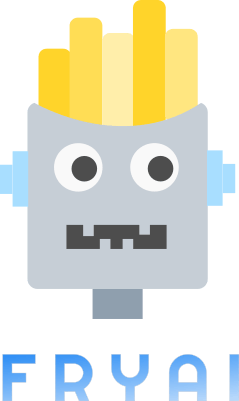- FryAI
- Posts
- The real reason Microsoft left OpenAI's Board
The real reason Microsoft left OpenAI's Board

Good morning, and welcome to a new week of feasting on the latest in AI! Let’s get to it, shall we? 🦾
🤯 MYSTERY AI LINK 🤯
(The mystery link can lead to ANYTHING AI-related: tools, memes, articles, videos, and more…)
Today’s Menu
Appetizer: The real reason Microsoft left OpenAI’s Board 👀
Entrée: Is Gemini getting a body? 🦿
Dessert: AI uncovers secret whale language 🐳
🔨 AI TOOLS OF THE DAY
👍 Bizplanr: Create professional business plans effortlessly.→ check it out
💻 TensorWave: Cutting-edge GPU infrastructure for accelerated AI computations. → check it out
🚢 Wanderboat AI: An AI travel companion for discovering restaurants, attractions, and events. → check it out
THE REAL REASON MICROSOFT LEFT OPENAI’S BOARD 👀
OpenAI = Microsoft Jr. 😁
What happened? Microsoft has relinquished its observer role on OpenAI’s Board, less than eight months after securing the non-voting seat. Apple was supposed to be joining the board as well, but now it will refrain.
Why? First, Microsoft invested over $13 billion in OpenAI. Then, it transferred the development of its top AI tools and software to OpenAI. Now, it is relinquishing its observer role on the Board. This sequence of moves reflects Microsoft’s vision to become a cash cow consultant rather than taking on the liability of AI development and implementation. In this way, they reap the investment rewards with minimal regulatory and legal risk. Todd McKinnon of security firm Okta aptly put it, “It’s so bizarre. Imagine working at Microsoft. OpenAI is over there making all the exciting stuff. It’s almost like Microsoft is going to turn into a consulting company.”
What now? OpenAI’s new approach towards Microsoft and Apple will involve hosting “regular stakeholder meetings to share progress on our mission and ensure stronger collaboration across safety and security.” Basically, these organizations will serve as consultants rather than teammates.
“We’re grateful to Microsoft for voicing confidence in the Board and the direction of the company, and we look forward to continuing our successful partnership.”
IS GEMINI GETTING A BODY? 🦿
I tried to get my robot to like country music, but it will only listen to heavy metal. 🎸
What’s up? Google DeepMind published research which aims to leverage Gemini 1.5 Pro for robot spatial awareness and movements.
How did the research work? DeepMind’s research in “Mobility VLA” aims to combine Gemini’s massive 1M token context with map-like spacial recognition. In testing, Gemini-powered robots were given a video tour of their environment, learning through visual awareness like that depicted by Project Astra. The robot was then able to perform tasks by responding to multimodal instructions, such as voice, text, map sketches, and physical cues. For example, the researchers would say, “Take me somewhere I can draw,” and the Gemini bot would lead them towards an appropriate location.
What’s the significance? As AI continues to find implementations within our society, it’s nature is moving past chatbots and tools. AI-powered robots of all kinds are already beginning to emerge, driven by companies like Boston Dynamics and Tesla. Over the next few years, don’t be surprised if you see them walking the streets and doing jobs once done by humans.
AI UNCOVERS SECRET WHALE LANGUAGE 🐳
Q: What’s a whale’s favorite food?
A: Krilled cheese. 🥪
What’s new? Researchers studying sperm whale communication used AI to reveal sophisticated structures akin to human language.
How did it work? Using AI, scientists from Project CETI (Cetacean Translation Initiative) discovered a “sperm whale phonetic alphabet.” Sperm whales communicate using rhythmic sequences of clicks called codas. While it was previously believed there were only 21 coda types, the AI-driven research identified 156 distinct codas, uncovering a rich diversity in whale vocalizations.
What does this mean? This discovery suggests that sperm whale communication might possess a combinatorial coding system, allowing for complex vocal expressions similar to human phonemes. Such complexity indicates a potential for a “duality of patterning,” where seemingly meaningless elements combine to form meaningful sequences, a feature thought to be unique to human language. This shows the power of AI to help us understand the creatures of our world in ways we have never been able to before.
MONEY MONDAY 🤑
People are discovering innovative (and sometimes wacky) ways to make money using AI. Check out today’s featured video:
HAS AI REACHED SINGULARITY? CHECK OUT THE FRY METER BELOW:
What do ya think of this latest newsletter? |




